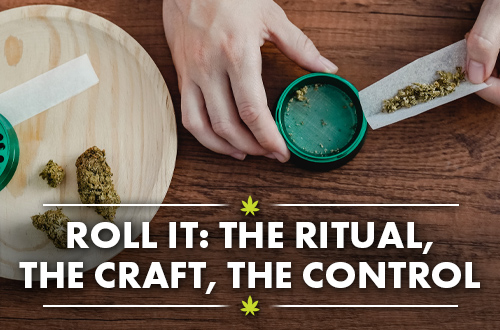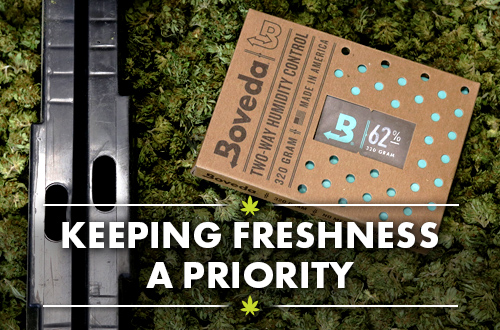Curious about the best way to smoke weed and get the most out of the experience? It’s no longer about choosing the right indica or sativa strain—it turns out cannabis terpenes (aka terps) may play a bigger part than you may think.
Don’t Strain Yourself
A recent study conducted at Dalhousie University claims that the terms “indica” and “sativa” are actually meaningless when it comes to describing the effects of modern-day cannabis flower.
Researchers revealed, “It was frequently the case that strains labeled indica were just as closely related to strains labeled sativa as they were to other strains labeled indica.”
So if indica and sativa can’t tell us what a cannabis strain will make you feel, what will? Cannabis terpenes. But what are terps?
Terpenes give all plants their natural flavor or aroma. In cannabis, terpenes also play a vital role in how a specific strain may affect you. If the cannabinoids like THC are the gas, then terpenes are the GPS system guiding your high.
Many people shop for cannabis by looking for the highest THC levels, but more discerning customers follow their noses. A study recently published in the journal Psychoactives showed that cannabis aroma was more appealing to consumers than cannabinoid percentages when comparing products.
Common Cannabis Terpenes
There are thousands of terpenes in the natural world, but there are eight that tend to be prominent in the majority of commercial cannabis strains:
- Pinene – Evergreen in flavor and aroma. Pinene is a cannabis terpene that tends to offer energizing effects.
- Limonene – Another uplifting terpene. Limonene can also found in citrus fruits, like—unsurprisingly—lemons.
- Ocimene – A fruity and herbal terpene. Ocimene tends to be more sedative.
- Linalool – Also found in lavender, and a favorite in commercial cleaning products. Linalool usually provides relaxing effects.
- Terpinolene – One of the rarest terpenes. Terpinolene is rarely found on its own, and it often with other terpenes that result in a cerebral, uplifting effect.
- Myrcene – Another highly sedative terpene. Myrcene is among the most abundant cannabis terps, and is typically prized for its balance with other terps.
- Beta-caryophyllene – Peppery and herbaceous. Beta-caryophyllene provides a chill experience in cannabis.
- Humulene – Found in hops. Humulene is a dank, earthy terpene that works in tandem with the other cannabis terpenes to enhance effects.
Terpene profiles vary from strain to strain. Individual profiles are mostly determined by genetics, but growing environments, cultivation methods, processing, and storage may also factor in. This explains why the same strain may hit differently between brands.
Let’s dive deeper into some of the elements that may affect your weed experience—and its terps.

How Curing Affects Cannabis Terpenes
Cannabis flower needs to be dried and cured post-harvest to smoke properly. Stalks are taken from the ground and then hung up or laid flat for 10-14 days to dry, depending on environmental conditions.
Once dry, buds are removed from the stalks and placed in airtight containers like mason jars, storage bags, or tote bins to cure. The containers are opened occasionally and agitated to help circulate air.
Most cultivators will cure for at least two weeks but some will cure even longer, up to a month. The curing process is important because it provides a smoother and tastier smoking experience.
During the dry and cure process, cannabis terpenes will naturally evaporate. Fortunately, there are ways to help save the terps in your weed.
Cannabis Storage, RH, and Terpenes
Once dried and cured, it’s time to store properly. To prevent terpene evaporation, growers must use the right containers, maintain proper humidity, avoid high temperatures—and use a humidity-control pack like Boveda.
Airtight jars and bags are the first step in saving the terps. The more oxygen in the container, the higher the risk of terpene loss—and over-drying. Sunlight can also be harmful to your cannabis, so using opaque containers that are kept in cool, dark places is key.
Relative humidity (RH) is one of the most important factors to prevent terpene evaporation. RH is the ratio of water vapor the air can hold at different temperatures. Storing weed in an RH between 55% and 65% is the best way to prevent terpene loss.
Fortunately, Boveda’s 58% and 62% terpene shields will get you there quickly and precisely.
How Different Consumption Methods Affect Cannabis Terpenes
Not everyone knows how to smoke weed to get the most terpenes out of the process but there are plenty of tips and tricks.
Smoking a joint or a bowl relies on combustion, i.e., you light the bud on fire. While this consumption method is among the simplest, it may not allow you to reap the full benefits from your terps. This is due to the fact that terpenes have a lower boiling point (usually between 200 and 400 degrees depending on the terp).
Using a dry herb vaporizer is a great way to get a full terp experience. These devices use a special oven instead of flame, heating the flower evenly and slowly. This provides a smoother, tastier hit but likely less vapor.
Also, if you’ve been curious about how to smoke weed without coughing, vaporization may be the answer.
Cannabis Terpenes—Guiding your Weed Smoking Experience
Cannabis is beloved for its many positive effects and therapeutic benefits. Without crucial terpenes, the experience would be very different.
Terps are one of the most crucial parts of the cannabis plant. It’s a sad fact, but once terpenes evaporate, they’re gone for good. To maintain your terpenes and preserve the quality of your bud, always make sure to properly store it—and always use Boveda’s 58% and 62% terpene shields to avoid terpene evaporation!








